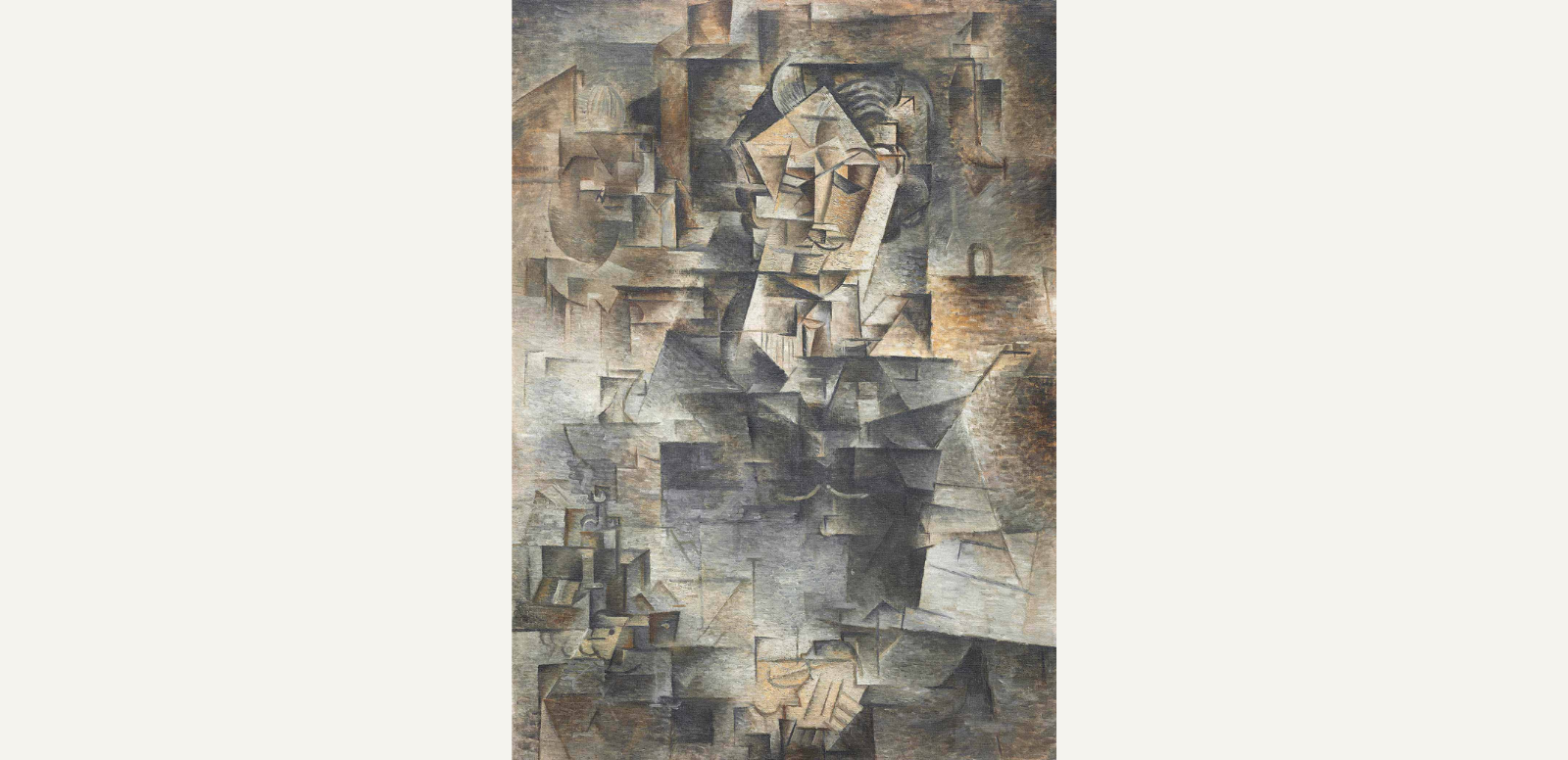
© Sucesión Pablo Picasso, VEGAP, Madrid 2022
The work Portrait of Daniel-Henry Kahnweiler was completed by Pablo Picasso in 1910. It is an oil on canvas painting in the style of analytical cubism. It is now in the Art Institute of Chicago.
The work depicts Daniel-Henry Kahnweiler, art dealer, writer and publisher, a friend of Pablo Picasso. Two twenty-somethings who met in Paris where Kahnweiler opened his first gallery and began to represent Picasso in 1908. A professional relationship that developed into a relationship of deep complicity with the creators of early Cubism, whom he provided with a material space to exhibit in his "little gallery", but above all with a conceptual space, through his writings, being one of the architects of the discourses and narratives of the new avant-garde. His book The Road to Cubism (1920) provided a theoretical frame of reference for the Cubist experimentation initiated by George Braque and Pablo Picasso, the dissemination of which he extended through his important work as a gallery owner and publisher.
The Cubist portrait of this man of the arts is notable for its use of brown, grey, black and white. We perceive the dealer's sharp eye for the decomposition and recombination of forms, some of which are recognisable and serve as references: a wave of hair, the knot of a tie or the chain of a watch. The mixture of glossy and semi-transparent surfaces provides various points of view that intermingle in the general atmosphere of the work.
The end result is a new reading of a traditional genre in an archetypal pose, seated with his hands in his lap, for which Kahnweiler posed up to thirty times.

